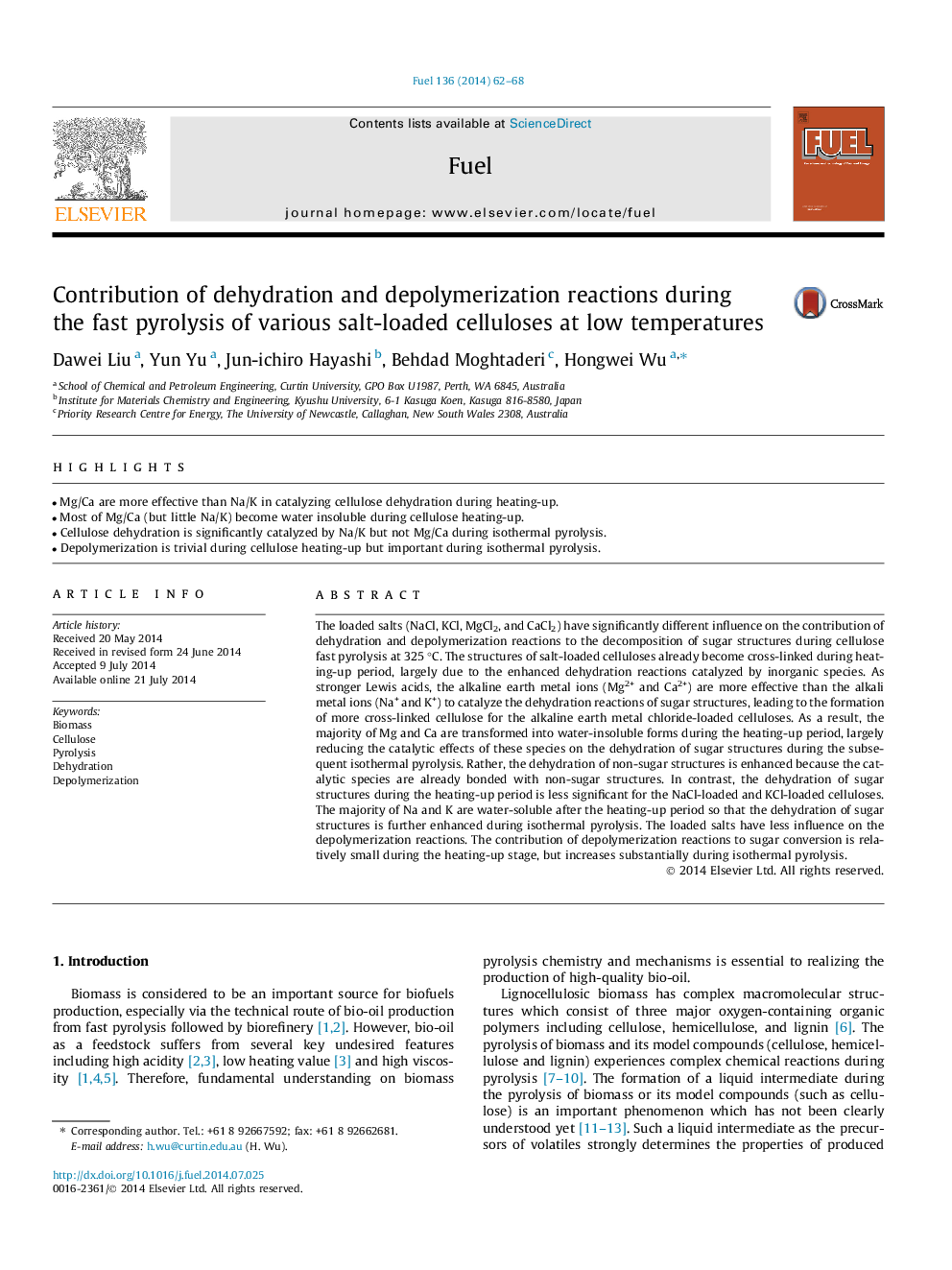| کد مقاله | کد نشریه | سال انتشار | مقاله انگلیسی | نسخه تمام متن |
|---|---|---|---|---|
| 206075 | 461138 | 2014 | 7 صفحه PDF | دانلود رایگان |
• Mg/Ca are more effective than Na/K in catalyzing cellulose dehydration during heating-up.
• Most of Mg/Ca (but little Na/K) become water insoluble during cellulose heating-up.
• Cellulose dehydration is significantly catalyzed by Na/K but not Mg/Ca during isothermal pyrolysis.
• Depolymerization is trivial during cellulose heating-up but important during isothermal pyrolysis.
The loaded salts (NaCl, KCl, MgCl2, and CaCl2) have significantly different influence on the contribution of dehydration and depolymerization reactions to the decomposition of sugar structures during cellulose fast pyrolysis at 325 °C. The structures of salt-loaded celluloses already become cross-linked during heating-up period, largely due to the enhanced dehydration reactions catalyzed by inorganic species. As stronger Lewis acids, the alkaline earth metal ions (Mg2+ and Ca2+) are more effective than the alkali metal ions (Na+ and K+) to catalyze the dehydration reactions of sugar structures, leading to the formation of more cross-linked cellulose for the alkaline earth metal chloride-loaded celluloses. As a result, the majority of Mg and Ca are transformed into water-insoluble forms during the heating-up period, largely reducing the catalytic effects of these species on the dehydration of sugar structures during the subsequent isothermal pyrolysis. Rather, the dehydration of non-sugar structures is enhanced because the catalytic species are already bonded with non-sugar structures. In contrast, the dehydration of sugar structures during the heating-up period is less significant for the NaCl-loaded and KCl-loaded celluloses. The majority of Na and K are water-soluble after the heating-up period so that the dehydration of sugar structures is further enhanced during isothermal pyrolysis. The loaded salts have less influence on the depolymerization reactions. The contribution of depolymerization reactions to sugar conversion is relatively small during the heating-up stage, but increases substantially during isothermal pyrolysis.
Journal: Fuel - Volume 136, 15 November 2014, Pages 62–68
